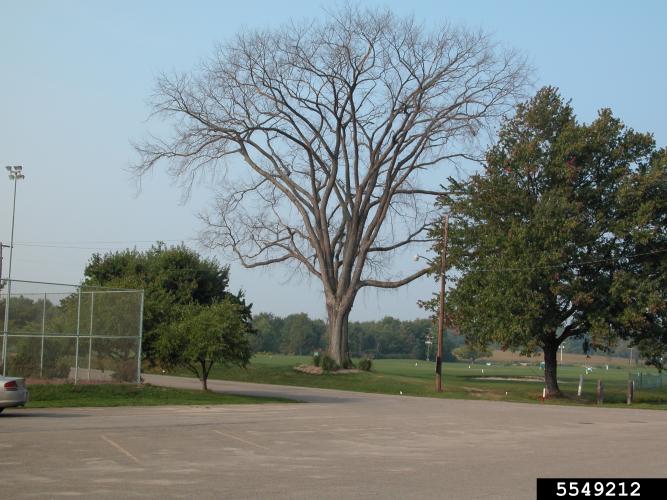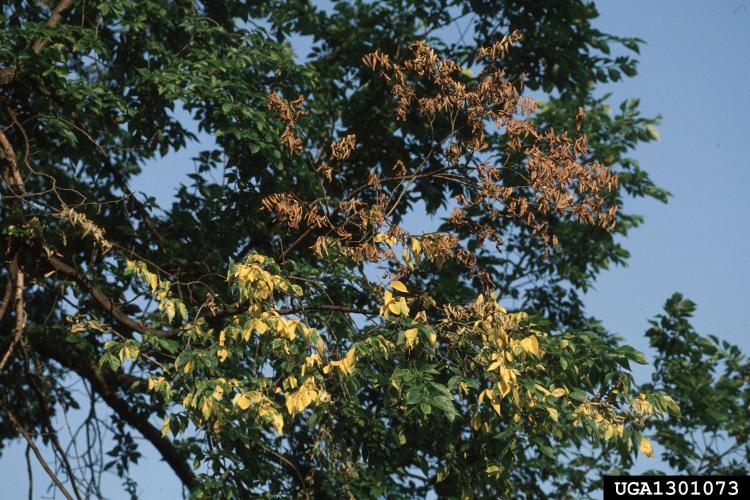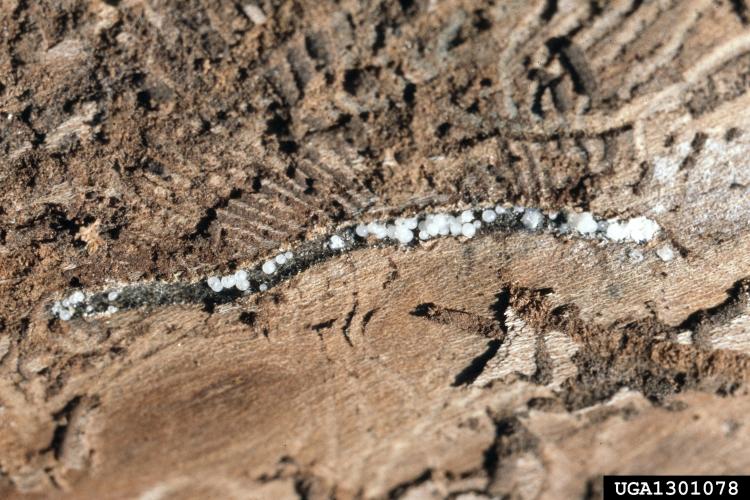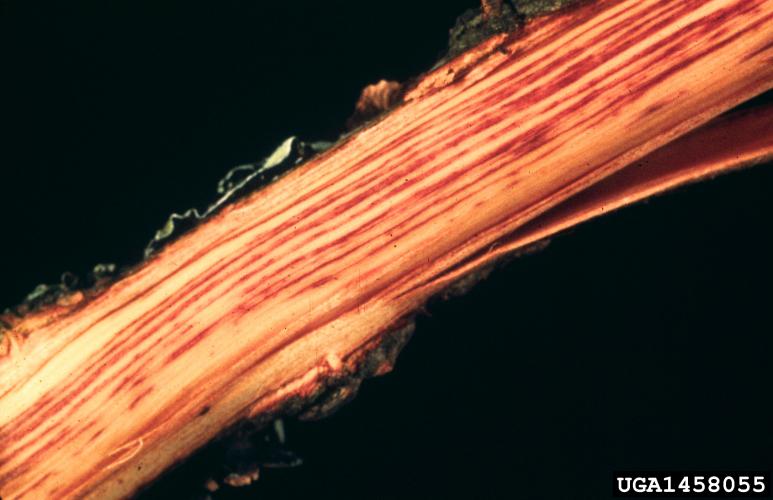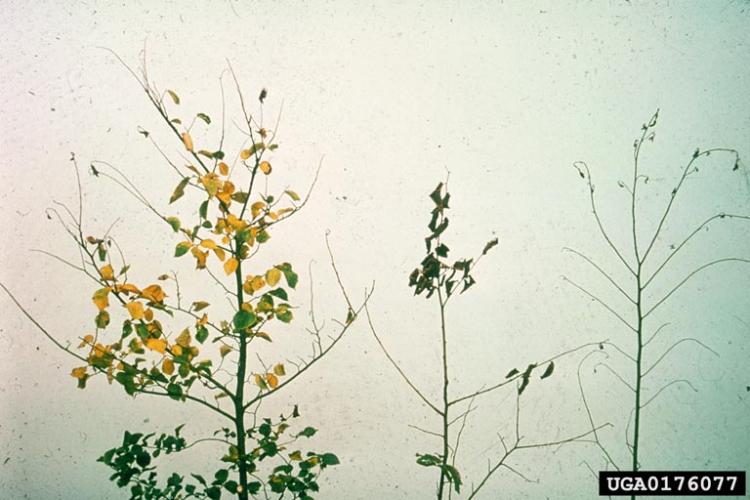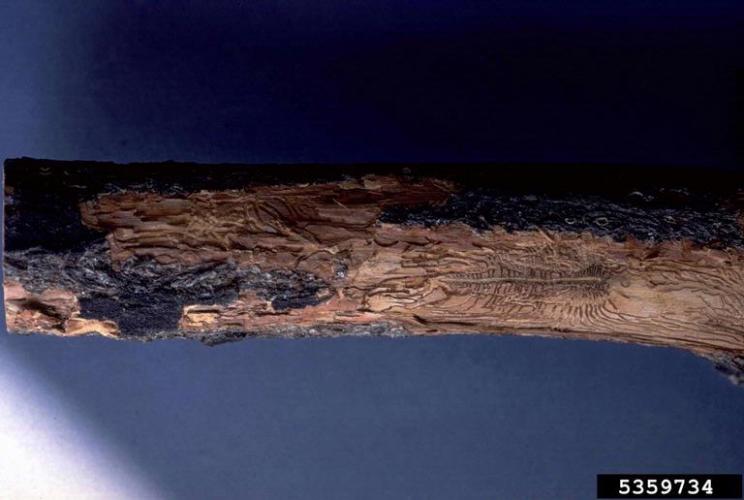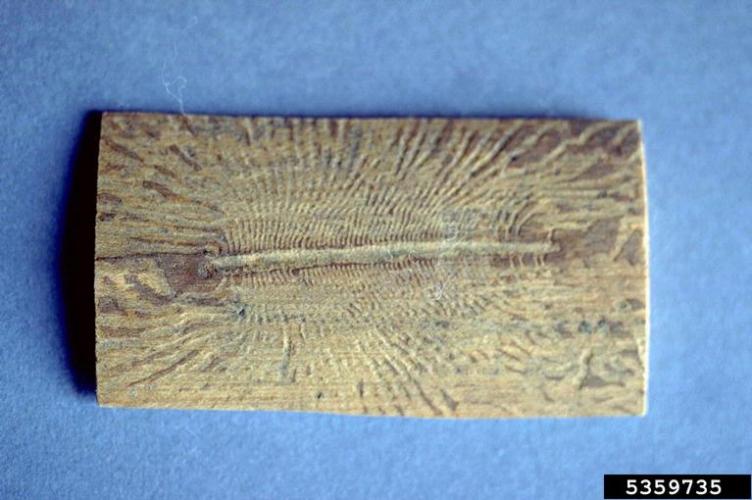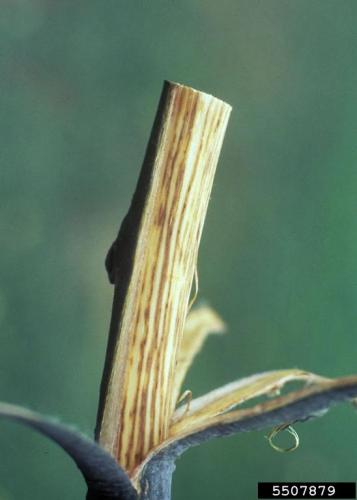Dutch Elm Disease
Identification
Dutch elm disease is caused by a fungus (Ophiostoma novo-ulmi; O. ulmi) that affects elm trees, primarily the American elm (Ulmus americana). The fungus grows in the xylem layer of the tree, blocking the movement of water and nutrients, which eventually girdles and kills the tree. The fungus is transported to host trees on elm bark beetles which feed on the bark, creating wounds through which the fungus spores can enter the tree. The fungus can also move through the root system of diseased trees into the roots of adjacent trees if the roots have grafted together.
signs and symptoms
Symptoms develop quickly, usually within 4-5 weeks after infection. The first visual symptom is called “flagging”, which is when the leaves on one or more branches begin wilting and yellowing. Flagging may begin in a discrete part of the crown but can rapidly spread to all branches. Eventually, the leaves may die and fall. Brown streaking can be seen under the bark in the xylem. This brown discoloration looks like a circle of brown dots when observed in a cross section.
See image slideshow above for signs and symptoms.
Biology
Origin
Dutch elm disease was first described in Holland in 1921, although it is thought to have originated in Asia. It was introduced into the United States in the 1930’s on diseased timber from Europe. It rapidly spread across the country, reaching the west coast in 1973. Since its arrival, it has killed over 40 million American elm trees and has proven to be one of the most destructive shade tree diseases in North America.
Life Cycle
The fungus reproduces through spores that are stored in the xylem of the host tree. Bark beetles burrow through the bark into the wood to lay their eggs, and in that process spores become attached to their bodies. When the beetles travel to a new elm tree, they transport the fungal spores and thus spread the pathogen. The pathogen can also spread between root systems of trees if they are planted close enough together to allow root grafting. From the point of inoculation, the fungus moves up and down the trunk through the xylem. Once the fungus reaches the root system, it may ascend the trunk in a wave of infection that kills the whole tree or a major section of it.
Ecological Threat
The American elm tree was an important forest and urban tree in North America, up until the early 1900’s. Its form and tolerance of the urban environment made it a favored street tree across the United States. It was also a prominent species in bottomland forests, greatly contributing to the health of riparian ecosystems. Since the disease’s arrival in the 1930’s, over 40 million American elm trees have been killed, and today it continues to suppress the population of elm trees in forested ecosystems. American elms can still be found in forests since the tree is a prolific seed producer and grows quickly, allowing many trees to bear seed before succumbing to the disease.
Vermont Distribution
Dutch elm disease has spread throughout Vermont.
Citations
Photo Credit
Cheryl Kaiser, University of Kentucky, Bugwood.org
George Hudler, Cornell University, Bugwood.org
UK Forestry Commission, Bugwood.org
William M. Brown Jr., Bugwood.org
Penn State Department of Plant Pathology & Environmental Microbiology Archives, Penn State University, Bugwood.org
Joseph Obrien, USDA Forest Service, Bugwood.org
North Carolina Forest Service, Bugwood.org
Information credit
The American Phytopathological Society
USDA Forest Service: How to Identify and Manage Dutch Elm Disease
